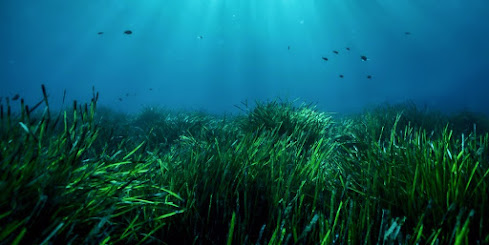 |
Image of a hyena coprolite taken with a microscope. In the center is a toxocara egg.
Credit: Dmitry Gimranov |
Ural paleontologists, together with Permian parasitologists, found helminth eggs in coprolites (fossil excrement) of the giant short-faced hyena Pachycrocuta. This is the earliest finding indicating that this species of hyena was infected with parasites and had toxocariasis. A description of the finding and analysis of the specimens is published in
Doklady Biological Sciences.
"During excavations in the Tavrida cave we found the remains of large mammals, including at least two dozen individuals of Pachycrocuta hyena, dated to the early Pleistocene (1.5-1.8 million years). We believe that hyenas used the cave Tavrida as a den for quite a long time, because here, in the southern corridor of the cave, there were a huge number of coprolites of hyenas, both single and in large assemblies. The massive teeth and especially strong enamel structure allowed hyenas to gnaw the bones of even large hoofed animals. Therefore, the Pachycrocuta could utilize the carcasses of large herbivores," says Dmitry Gimranov, Senior Researcher at the Institute of Plant and Animal Ecology of Ural Branch of Russian Academy of Sciences and Laboratory of Natural Science Methods in Humanities at Ural Federal University.
Scientists analyzed three samples of coprolites, in one of which they found parasite eggs. Based on the size and morphology, paleontologists determined that these were helminth eggs. Scientists believe that toxocariasis was a widespread disease among extinct hyenas. This is also confirmed by the data of other researchers. Eggs of helminths of 1.2 million years old were found in coprolites of the same hyena species from the Haro site in Pakistan and 0.3-0.5 million years old at the Menez-Dregan site in France. There are also finds in Italy (Costa San Gicomo site) dated at 1.5 million years. The find in Tavrida will not only help to complete the list of parasites of ancient animals and compare it with helminths of modern hyenas, but also to clarify other features of ancient animals.
"Ancient animal coprolites are unique fossils reflecting biological features that cannot be demonstrated by studying bone remains. Coprolites can be a valuable source of paleoclimate data because they may contain pollen and spore remains of ancient plants. Coprolites may also contain remains of ancient parasites, which provides a unique opportunity to obtain additional information about the ecology of extinct species," adds Daniyar Khantemirov, Laboratory of Natural Science Methods in Humanities researcher.
Note that the research team included employees of the Ural Federal University, the Institute of plant and animal ecology Ural Branch of the Russian Academy of Sciences and the Perm State Agro-Technological University named after Academician D.N. Pryanishnikov.
Reference:
Toxocariasis is an infection caused by animal ascarid larvae. Other helminth eggs of toxocarias mature in the soil and infect dogs, cats and other animals. The source of the disease, toxocara was discovered by the German scientist Werner in 1782. Only in 1950 lesion with these helminths was isolated as a separate disease. Eggs from toxocars can be found in the ground and contaminated water.
Source/Credit: Ural Federal University
pal072822_01
















.jpg)